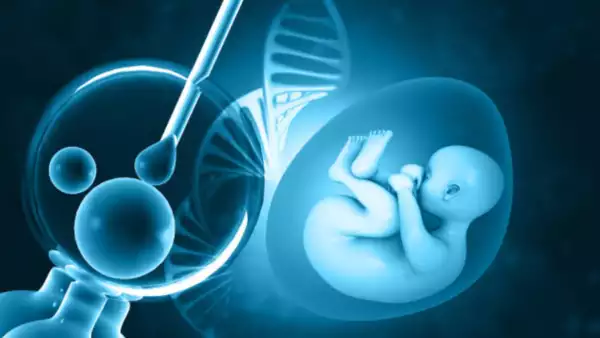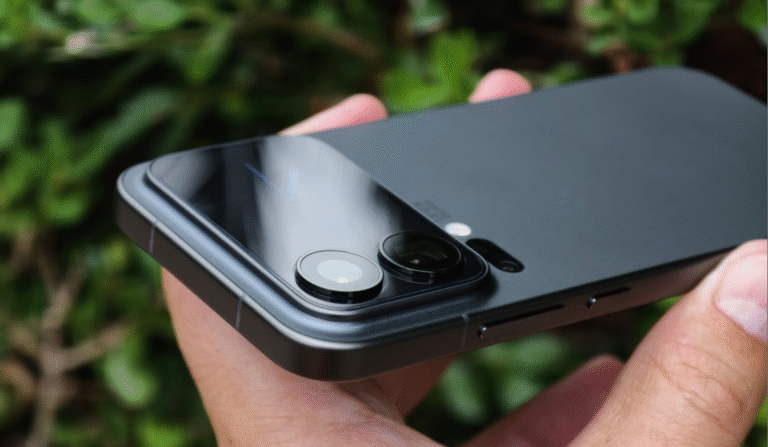
World’s First AI-Powered IVF Baby: A Game-Changing Breakthrough in Fertility
|
Getting your Trinity Audio player ready...
|
In a historic milestone for reproductive medicine, the world’s first baby has been born through an AI-powered in vitro fertilization (IVF) system. This groundbreaking achievement, pioneered by Conceivable Life Sciences, showcases how artificial intelligence and robotics can transform fertility treatments by reducing human error, enhancing precision, and potentially making IVF more accessible. But what does this mean for the future of family-building? Let’s explore this revolutionary technology in a clear, SEO-optimized, and easy-to-read guide.
A New Era in IVF: The Birth of an AI-Assisted Baby
On April 2025, a healthy baby boy was born in Guadalajara, Mexico, marking a turning point in assisted reproductive technology. The mother, a 40-year-old woman using donor eggs, underwent IVF through a fully automated intracytoplasmic sperm injection (ICSI) process powered by AI. Unlike traditional IVF, which relies heavily on the skill of embryologists, this system handled all 23 steps of ICSI—from sperm selection to egg injection—with unmatched accuracy.
This breakthrough, detailed in Reproductive Biomedicine Online, demonstrates the potential of AI to revolutionize fertility care. By minimizing variability and fatigue-related errors, the technology promises to improve success rates and offer hope to millions struggling with infertility.
How Does AI-Powered IVF Work?
Traditional ICSI, a common IVF technique since the 1990s, involves manually injecting a single sperm into an egg under a microscope. This delicate process requires highly trained embryologists, but human factors like fatigue or inconsistency can impact outcomes. The new AI system, developed by Conceivable Life Sciences, changes the game by automating every step. Here’s how it works:
- AI Sperm Selection: The system uses advanced algorithms to analyze sperm based on visual cues, identifying the healthiest candidates for fertilization.
- Sperm Immobilization: A laser precisely targets the sperm’s tail, making it easier to handle without damaging its viability.
- Automated Injection: Robotics perform the injection with pinpoint accuracy, ensuring the sperm is delivered perfectly into the egg.
- Remote Oversight: A human operator supervises via livestream, initiating steps with a button press, but the AI handles the heavy lifting.
In the case of this historic birth, five donor eggs were fertilized using the system. Four developed into viable embryos, and one high-quality blastocyst was transferred, resulting in a successful pregnancy.
Why This Breakthrough Matters
Infertility affects 1 in 6 couples worldwide, and IVF success rates hover around 30% per cycle, often due to human error or subjective decision-making. The introduction of AI into IVF addresses these challenges in several ways:
Key Benefits of AI-Powered IVF
- Unmatched Precision
AI eliminates variability by standardizing sperm selection and injection, potentially boosting fertilization rates. The system’s accuracy surpasses human capability, ensuring optimal outcomes. - Reduced Human Error
Embryologists can become tired or distracted, leading to mistakes. Automation minimizes these risks, offering consistency that manual processes can’t match. - Scalability and Accessibility
While currently expensive, experts like Jacques Cohen from Conceivable Life Sciences believe costs will drop as the technology matures, making IVF more affordable for families worldwide. - Personalized Care
AI can analyze vast datasets to tailor treatments, improving egg quality, embryo selection, and overall success rates. - Ethical Advancements
By streamlining processes, AI reduces the number of eggs or embryos needed, addressing ethical concerns about embryo wastage.
Challenges to Overcome
Despite its promise, AI-powered IVF faces hurdles:
- Cost: The technology is pricey, limiting immediate widespread use.
- Regulation: Robust clinical trials and transparent guidelines are needed to ensure safety and efficacy.
- Ethical Concerns: Critics worry about over-reliance on AI, questioning the removal of human judgment in such a personal process.
- Scalability: More studies are required to confirm the system’s effectiveness across diverse patient groups.
The Future of Fertility: What’s Next?
This birth is just the beginning. Experts envision AI transforming every stage of IVF, from ovarian stimulation to embryo selection. Here’s what the future might hold:
- Enhanced Embryo Selection: AI could predict embryo viability with greater accuracy using time-lapse imaging and genetic data.
- Personalized Protocols: Machine learning could customize hormone treatments based on patient profiles, reducing side effects like ovarian hyperstimulation syndrome.
- Global Access: As costs decrease, automated systems could bring high-quality fertility care to underserved regions.
- Integration with Other Tech: Combining AI with innovations like stem cell-derived eggs or gene editing could push reproductive medicine further.
While fully automated IVF clinics or “fertility machines” remain speculative, this milestone proves that AI can enhance precision and reliability, paving the way for broader advancements.
AI-Powered IVF vs. Traditional IVF: A Comparison
| Feature | AI-Powered IVF | Traditional IVF |
|---|---|---|
| Process | Fully automated ICSI with AI and robotics | Manual sperm injection by embryologists |
| Precision | High, with consistent AI-driven accuracy | Varies based on human skill |
| Error Risk | Minimal due to automation | Higher due to fatigue or variability |
| Cost | Currently expensive | $12,000–$17,000 per cycle |
| Availability | Experimental, limited to pilot programs | Widely available globally |
| Success Rate | Promising but needs more data | ~30% per cycle |
Voices from the Field
“This level of automation could reduce the chance of human error and fatigue affecting outcomes,” said Jacques Cohen, co-founder of Conceivable Life Sciences. “As we refine the technology, we hope to make fertility treatments more effective and accessible.”
Meanwhile, Dr. Alejandro Chavez-Badiola, a fertility expert, sees AI as part of a larger vision: “Automation is not just about precision—it’s about dreaming bigger, making parenthood possible for more people, even in challenging environments.”
Ethical and Social Implications
The rise of AI in IVF sparks important questions:
- Human Touch: Will automation depersonalize a deeply emotional journey?
- Equity: Can cost reductions ensure fair access, or will AI widen disparities?
- Regulation: How will governments balance innovation with safety?
These concerns highlight the need for transparent AI decision-making and inclusive policies to ensure the technology serves all communities ethically.
A Bright Future for Family-Building
The birth of the world’s first AI-powered IVF baby is more than a scientific triumph—it’s a beacon of hope for those navigating infertility. By blending cutting-edge AI with the dream of parenthood, this breakthrough redefines what’s possible in reproductive medicine. While challenges remain, the potential for higher success rates, lower costs, and global access makes this a pivotal moment.
As research continues, AI-powered IVF could become a cornerstone of fertility care, helping more people build the families they’ve always dreamed of. The journey to parenthood just got a little brighter—and a lot smarter.
FAQs About AI-Powered IVF
1. What is AI-powered IVF?
It’s an advanced IVF technique where artificial intelligence and robotics automate steps like sperm selection and injection, improving precision and reducing errors.
2. How is it different from traditional IVF?
Traditional IVF relies on manual processes by embryologists, while AI-powered IVF automates these tasks for greater consistency and accuracy.
3. Is AI-powered IVF safe?
Early results, like the recent birth, show promise, but more studies are needed to confirm safety across larger populations.
4. Will AI make IVF cheaper?
Not yet, but experts predict costs will decrease as the technology becomes more widespread.
5. Can AI-powered IVF replace embryologists?
AI enhances their work by handling repetitive tasks, but human oversight remains crucial for now.



